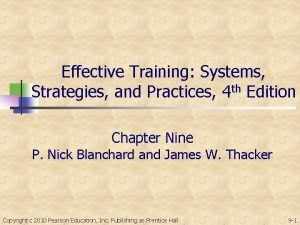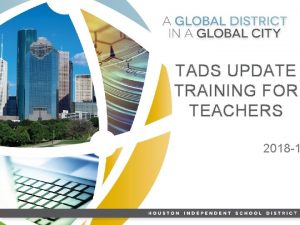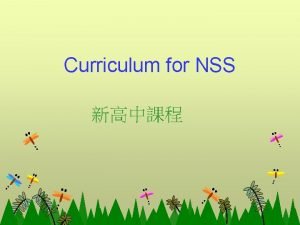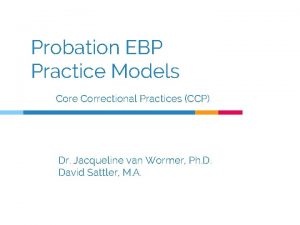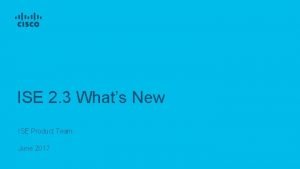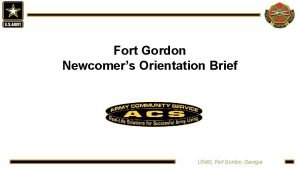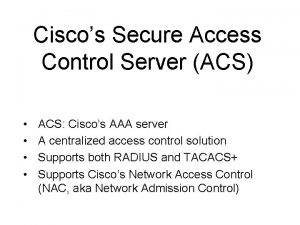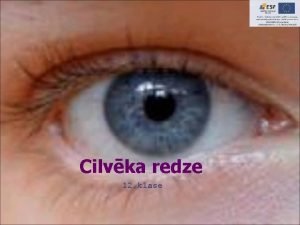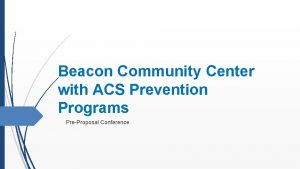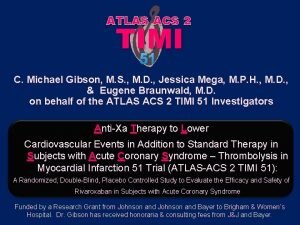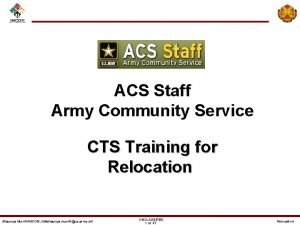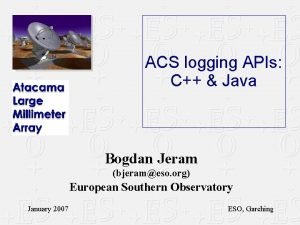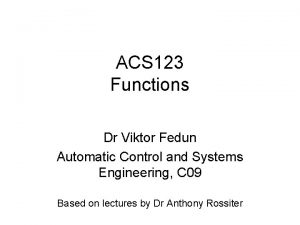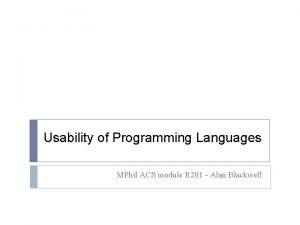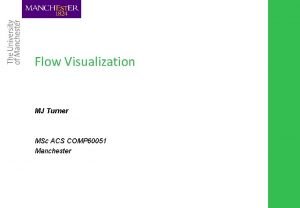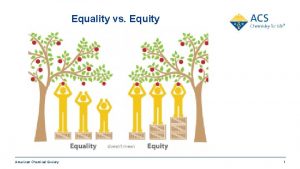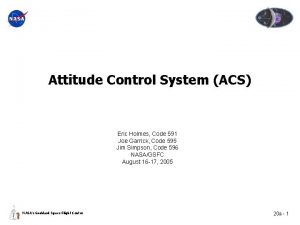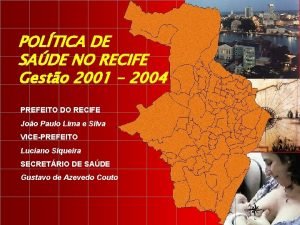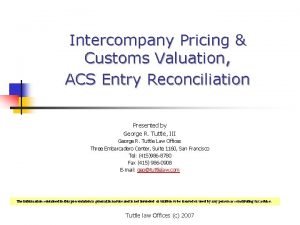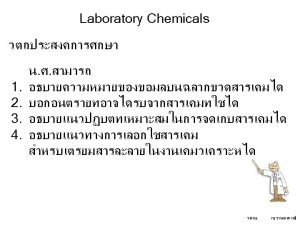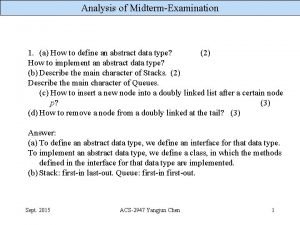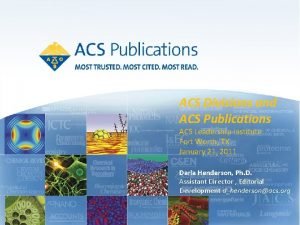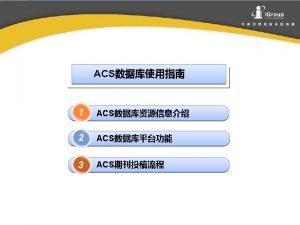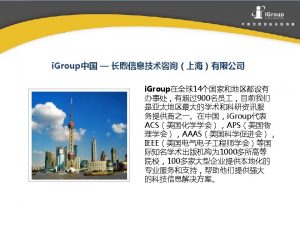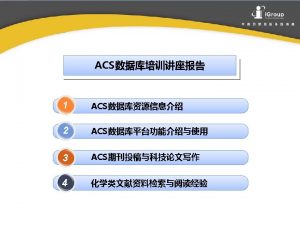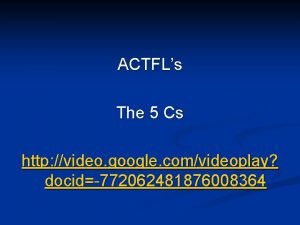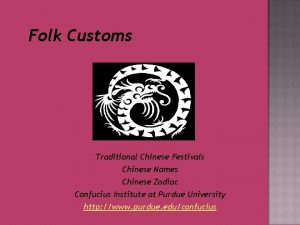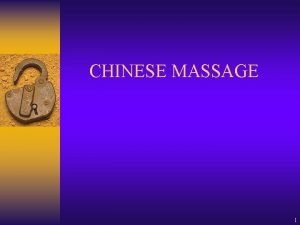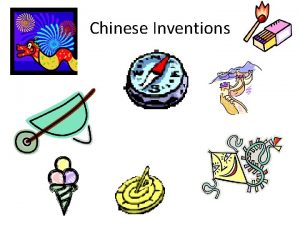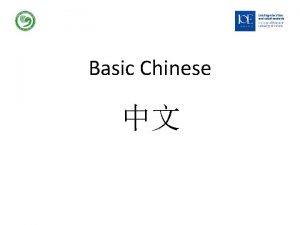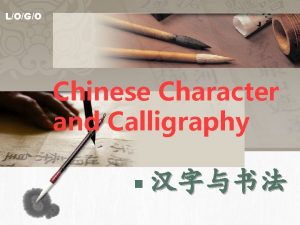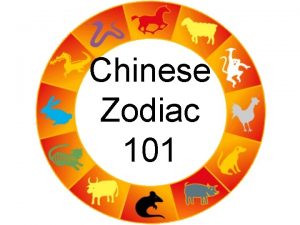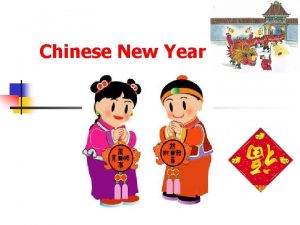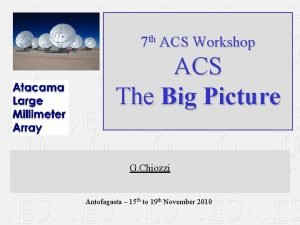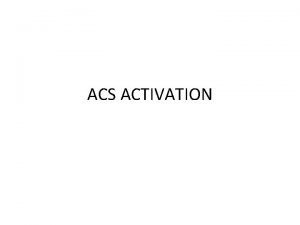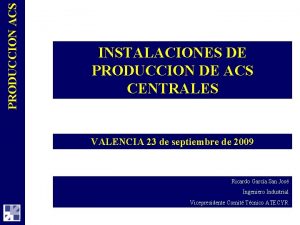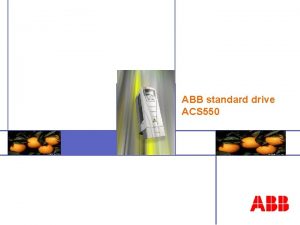ACTFLs Core Practices for Effective Chinese Learning ACS































- Slides: 31

ACTFL's Core Practices for Effective Chinese Learning ACS 45 th Conference Presenter: Dr. Yu-Lan Lin

By the end of the Session I can: • Define Core Practices in teaching of World Languages • Explain the significance of enacting the ACTFL Core Practices • Tell the “small grains” in each of the six ACTFL Core Practices • Follow the “teaching moves” identified in each of the small grain.

ACTFL’s 6 Core Practices 1. Use Target Language for Learning 2. Design Communicative Activities 3. Plan with Backward Design Model 4. Teach Grammar as Concept and Use in Context 5. Use Authentic Cultural Resources 6. Provide Appropriate Feedback Large-Grain Core Practices

Small grains Slice of a Core Practice 1

“Set of Teaching Moves” examples: In the “small-grain” practice: Using gestures to support meaning making, set of teaching moves could be: - 1) T says, 聽老師說 , getting attention - 2) T says, 請大家把功課拿出來 , using gestures - 3) T says, 從後面一個一個傳過來, using gestures - 4) T provides reactions/feedback to reinforce meaning: 很好, 還有誰還沒交功課?

Core Practice #1 Use Target Language for Learning 1 2 3 1. Use TL maximum 2. Offer structure & support 3. Create a need and purpose to use TL

Grain 1: Use target language maximum possible Teaching Moves: • 1. T creates comprehensible language • 2. T creates contexts for comprehension • 3. T creates comprehensible interactions between students

Grain 2: Offer structure and support Teaching Moves: • 1. T uses conversational strategies • 2. T provides feedback and follow-up • 3. T offers students ‘license’ to make errors

Grain 3: Create a need and purpose to use TL • Teaching Moves: • 1. T creates a task that relates to real-life situations ( Task: Celebrate the Earth Day) • 2. T pairs up students for interactions • 3. Have students negotiate meaning to work on information

Core Practice #2 Design Communicative Activities • 1. Listen to one another 1 • 2. Negotiate and interpret 2 3 meaning • 3. Avoid communication breakdown by clarifying meaning

Grain 1: Listen to one another Teaching Moves: • 1. T designs a task with a purpose in mind ( sharing: 一件難忘的事) • 2. Have students take turns exchange information • 3. Have students pay attention to meaning

Grain 2: Negotiate and interpret meaning Teaching Moves: • 1. Have students activate background knowledge • 2 Have students relate new information to one’s own 3. Have students use context clues to interpret meaning

Grain 3: Avoid communication breakdown by clarifying meaning Teaching Moves: • 1. Students use strategies to fill in information gap • 2. Teacher checks for understanding/provides support • 3. Students manage to follow up on information exchange

Core Practice #3 Plan with Backward Design Model 1 2 3 • 1. Set the end goals • 2. Determine acceptable evidence • 3. Plan learning activities

Grain 1: Set the end goals Teaching Moves: ( Theme: Technology in My Life) 1. T identifies functional goals and objectives 2. T identifies main concept and enduring understanding 3. T provides key questions that lead to enduring understanding for students

Grain 2: Determine acceptable evidence Teaching Moves: • 1. T designs formative assessments to monitor progress • 2. T design a culminating activity as summative assessment. • 3. T designs rubrics that contain assessment elements

Grain 3: Plan learning activities Teaching Moves: 1. Phase 1: “I do” 2. Phase 2: “We do” 3. Phase 3: “You do together” 4. Phase 4: “You do alone”

Core Practice #4 Teach Grammar as Concept and Use in Context • 1. Focus on meaning before form 1 • 2. Conceptual understanding of form 2 3 • 3 Motivation is key to grammatical competence

Grain 1: Focus on meaning BEFORE form Teaching Moves: • 1. T presents of a story with gestures and props • 2. T directs students’ attention to some aspects of the story • 3. T asks students to recall/tell parts of the story

Grain 2: Conceptual understanding of form Teaching Moves: • 1. T highlights a form/particular structure for student to focus. • 2. T and students engage in discussion of grammar points • 3. T uses assisting questions to help students discover patterns.

Grain 3: Motivation is key to grammatical competence Teaching Moves: • 1. T finds ways for students to find meaning in the form • 2. Have students use the form in creative and new ways to make meaning.

Core Practice #5 Use Authentic Cultural Resources • 1. Literal and inferential comprehension • 2. Interacting with texts 1 2 3 • 3. Use authentic texts

Grain 1: Literal and inferential comprehension Teaching Moves: • 1. T directs students to skim the text • 2. T asks students to analyze the text • 3. Students in groups discuss the text • 4. T ask students to explain the text

Grain 2: Interacting with Texts Teaching Moves: • 1. T activates students background knowledge • 2. Have students predict main idea/supporting details • 3. T develops guiding questions • 4. Have students react/respond to text

Grain 3: Use authentic texts Teaching Moves: • 1. T selects context-appropriate text • 2. T selects age-appropriate text • 3. T selects linguistic level-appropriate text

Core Practice #6 Provide Appropriate Feedback • 1. Use oral corrective 1 feedback • 2. Use peer-to-peer 2 3 feedback • 3. Use corrective feedback for writing

Grain 1: Use oral corrective feedback Teaching Moves: • 1. T uses prompts to elicit output • 2. T uses reformulations to provide input • 3. T uses a variety of corrective methods for feedback

Grain 2: Use peer-to-peer feedback Teaching Moves: 1. Have student A ask B, if B doesn’t respond, A gives an example and asks again 2. Have student A provide a few possible answers to prompt B

Grain 3: Use corrective feedback for writing Teaching Moves: • 1. T introduces corrective cues • 2. T corrects student writing with corrective cues • 3. Have students correct errors themselves

Characteristics of Core Practices • Powerful in advancing student learning • Not transparent or learnable through modeling alone • Complex instructional practices • Must be detailed, deconstructed, and explicitly taught to teachers

Characteristics of Core Practices • Unlikely to be learned well only through observation • Can be assessed • Need to be rehearsed and coached in the specific context • Can be justified as being meaningful and useful for becoming skilled practitioners
 Primary 2 malay worksheets
Primary 2 malay worksheets Effective training systems strategies and practices
Effective training systems strategies and practices Hisd one source
Hisd one source Chinese national curriculum core subjects
Chinese national curriculum core subjects Core correctional practices
Core correctional practices Cuadro comparativo e-learning m-learning b-learning
Cuadro comparativo e-learning m-learning b-learning Inner core and outer core
Inner core and outer core Earth mantle definition
Earth mantle definition Which layer is the least dense
Which layer is the least dense Core capabilities and core rigidities
Core capabilities and core rigidities Acs to ise migration
Acs to ise migration Rd acs
Rd acs Tasc fort gordon
Tasc fort gordon Cisco secure access control server for windows
Cisco secure access control server for windows Acs uzbūve
Acs uzbūve Preventive services (acs)
Preventive services (acs) Atlas acs
Atlas acs Acs client tracking system
Acs client tracking system Bogdan's eso
Bogdan's eso Viktor fedun
Viktor fedun Acs programming language
Acs programming language Retorno acs esquema
Retorno acs esquema Msc acs
Msc acs Acs
Acs Acs attitude control system
Acs attitude control system Acs green chemistry institute
Acs green chemistry institute Concurso acs recife
Concurso acs recife Customs reconciliation
Customs reconciliation Acs dobfar welfare
Acs dobfar welfare Dot
Dot Atlas timi 51
Atlas timi 51 Acs algorithm
Acs algorithm

